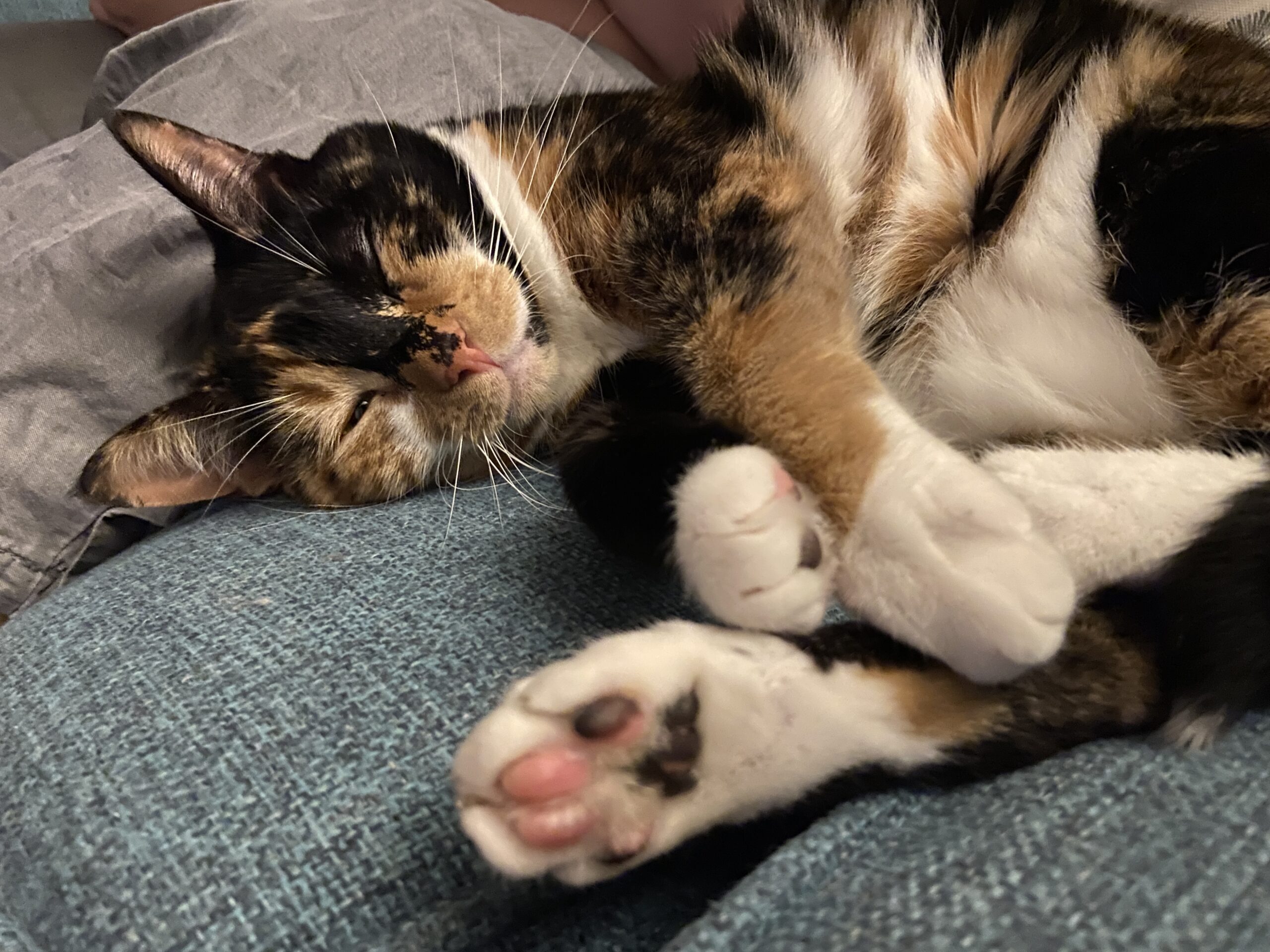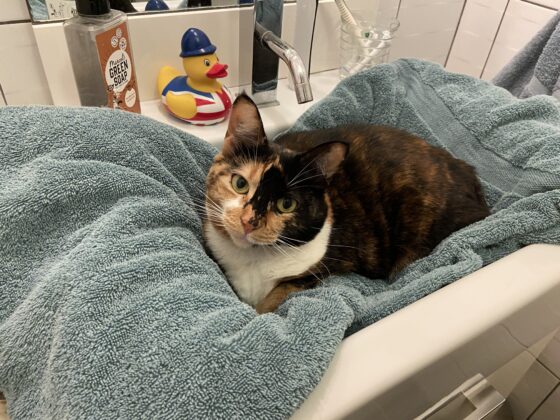What to expect from an expat cat? How to handle homesick felines

There are masses of online resources that can help expats and others adjust to life in a new country. For cats, though? Not so much, as Brandon Hartley found out.
It was around 3 pm on a Wednesday when I found Chloe sitting *in* our toilet.
She gazed up at me with an irked expression on her furry face. “What exactly is the problem?” she seemed to be asking. “Is this not a perfectly normal place to hang out on a hot summer afternoon?”
Then she jumped out and left a trail of soggy paw prints all the way down the hallway.
This was just one of the bizarre incidents that occurred after my partner and I agreed to cat sit for a colleague in the process of a complicated move to the Netherlands from America. Chloe, her four year old tortoiseshell, wound up staying with us for three weeks in our small home in central Leiden.
While we each grew up in households with cats, it had been over a decade since either of us had slept under the same roof with one. To make matter worse, Chloe was still jet-lagged, terribly confused, and literally out of her comfort zone.
There are plenty of articles online to help expats and others grappling with difficult moves to foreign locales. The equivalent for pets? Uh, good luck trying to find them, especially at midnight on a weeknight when you’re trying to convince a cat to stop using your pillows as a trampoline.
Before Chloe’s owner raced back to the US to finish packing up, she arrived at our place with a hastily gathered bag of pet products. A split second after the hatch on the cat carrier opened, Chloe bolted under our bed and remained there for eight straight hours.
Desperate to appease this flummoxed feline, we found ourselves plugging queries like ‘why won’t cat come out from under bed?’ and ‘how to get cat to go back under bed because it’s running around all night like a complete maniac?’ into Google.

Was Chloe homesick? Scared out of her wits? Rebelling like an angry teenager? Can cats get jetlag? We had no idea.
Delphine Vromman-Ural, who works for HomeVet, a veterinarian home service, told us Chloe’s behaviour was fairly normal for a young feline who had moved across the Atlantic before being dropped off in an unfamiliar environment with two complete strangers.
”Upon arrival, it’s very important to take it slowly. The recommendation is to keep the cat in a very small room to start with. They need to get used to the new scents and smells and sometimes even the differences in temperature.”
Personal bunker
Fortunately, Chloe was self regulating as far as this goes. Along with under the bed, she made a space beneath our kitchen counter her own personal bunker.
“They’re liable to hide and stay hidden for a while,” Dr. Vromman-Ural said. “They need to have hiding spaces, sometimes multiple ones. That’s expected behaviour. So it’s important that they have space where they can feel safe and where nothing will happen. They need to think ‘No one can reach me here and I have built up a little fortress for myself’.”
“Be prepared for them to explore at night when things are quieter,” she said. “They will feel safer then. But don’t lock them out of the bedroom so they know you’re still around.”
How long is this going to take?
Gary Brown, the founder and director of Tails of the City, a pet care service in Amsterdam, told us cats will gain confidence to explore once they realise they can trust you. “We find that offering treats can help,” he says. “At first, rolling them carefully near to where the cat is hiding, and then gradually reducing the distance until they are comfortable eating near to you.”
We tried the treat trick with Chloe. It took some time, but it did seem to help her become more comfortable with us. We gradually got accustomed to Chloe’s other peculiarities, among them taking naps in the bathroom sink and spreading her smart pellet cat litter absolutely everywhere in the laundry room.

We began putting a towel in the sink so she could be more ‘comfy’ and went to a local pet store to buy more stuff. We were overwhelmed by the wide assortment of cat products. I’m still not entirely sure what one does with a lick mat or why anybody would buy a plastic tongue brush.
Dutch tolerance, but for cats?
While Chloe eventually grew brave enough to sit on our front windowsills, she never quite got used to the sights and sounds of Leiden. Passing cyclists, pedestrians talking loudly, and boats on a nearby canal blasting electronic dance music all drew her ire. She repeatedly ran under our coffee table where she’d growl at them from a safer distance.
“You might be looking at between four and eight weeks for a cat to feel settled in their new home after such a journey,” Brown said.
That might seem like a million years but, given enough time, a cat will adjust.
“Cats are very much creatures of habit, so if you change everything, it will take them some time to recover,” says Vromman-Ural. “It’s very important to be patient and not try to rush things.”
Chloe returned to her owner around the time she worked up enough confidence to spend evenings with us on the couch while we watched the NBA Finals.
It’s probably for the best. All the fireworks our neighbours shot off once the Dutch national team made it to the Euro 2024 semi-finals might have caused her to escape and flee back to Schiphol.
Thank you for donating to DutchNews.nl.
We could not provide the Dutch News service, and keep it free of charge, without the generous support of our readers. Your donations allow us to report on issues you tell us matter, and provide you with a summary of the most important Dutch news each day.
Make a donation